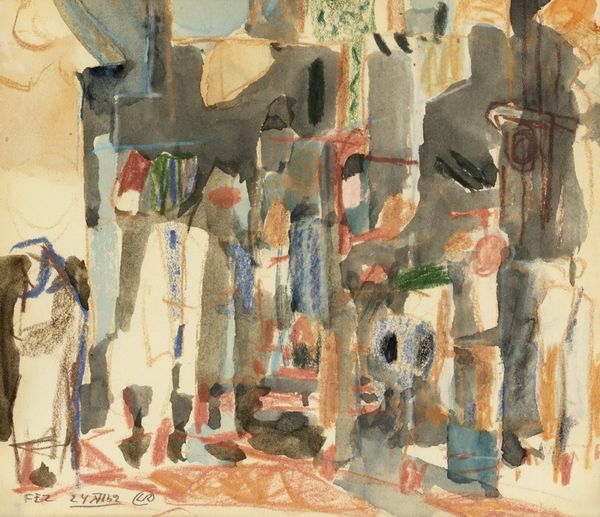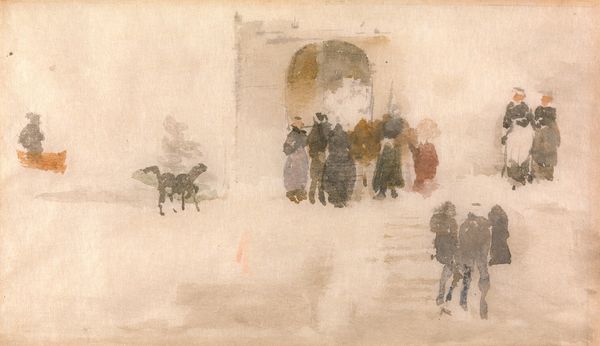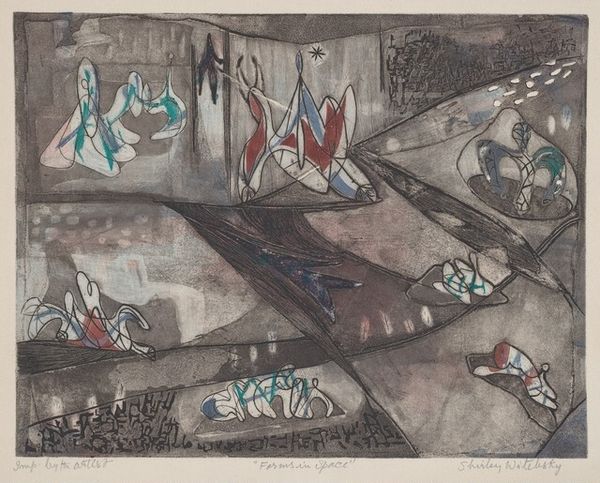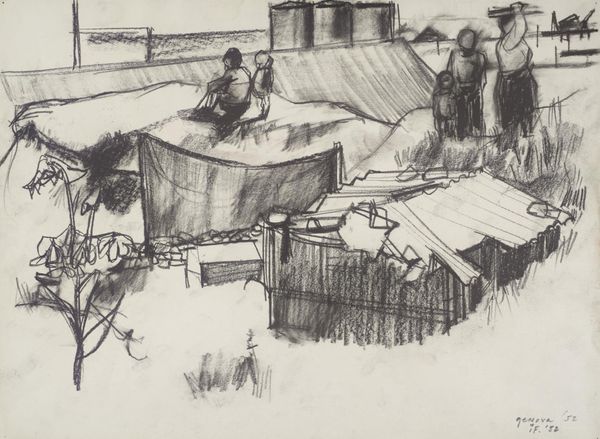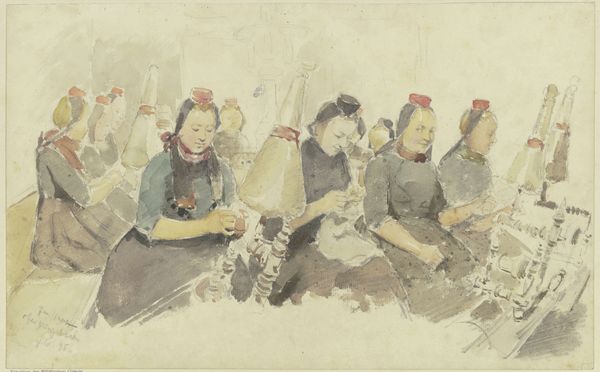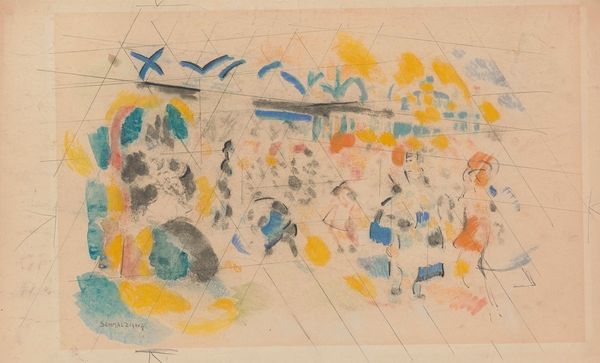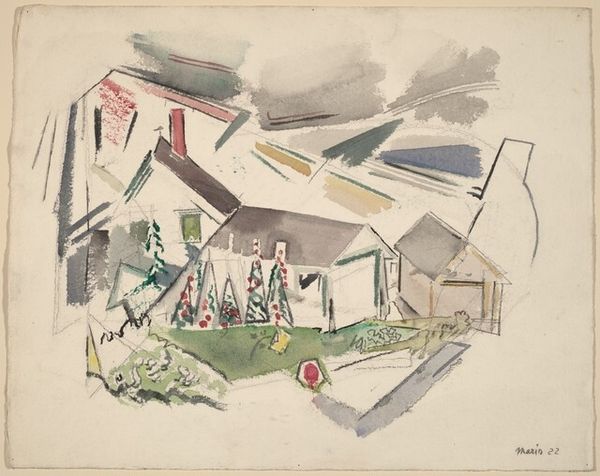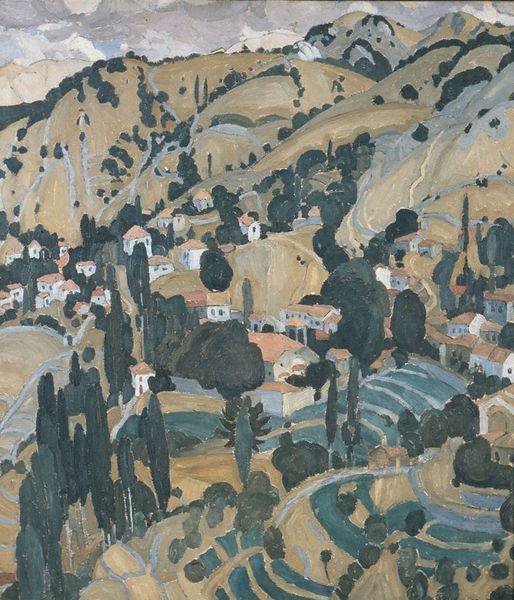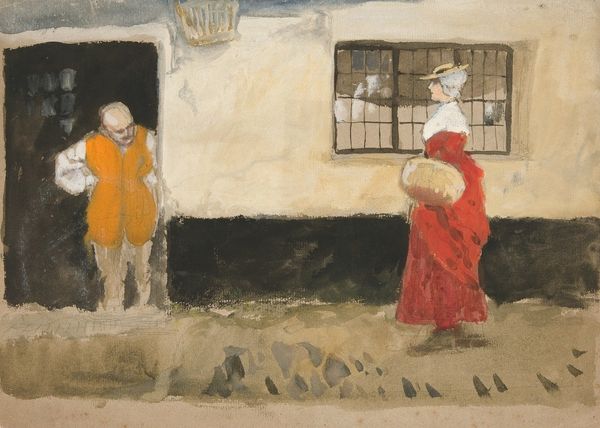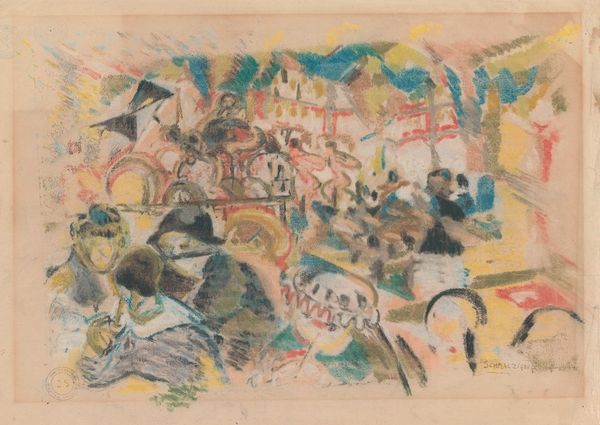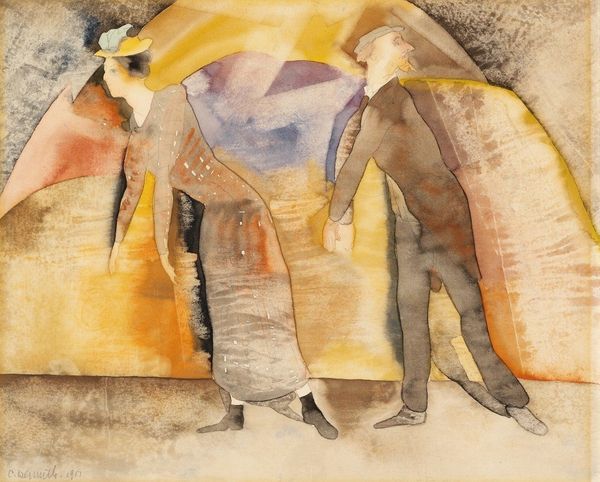
Copyright: Alexis Gritchenko,Fair Use
Editor: So, this is Alexis Gritchenko's "Galata," created around 1920, using watercolor and colored pencil in a mixed-media approach. It feels almost like a quick sketch, capturing a fleeting moment in a bustling cityscape. How would you describe the formal qualities? Curator: It is a study in controlled fragmentation. Note how Gritchenko employs a restricted palette, primarily earth tones punctuated by sharper chromatic accents—reds, greens. This chromatic restriction actually heightens the impact of these coloristic interventions. The application is of interest. Do you see how discrete applications create an almost faceted appearance? Editor: Yes, it's like he's building up the scene with these little planes of color, almost like a cubist approach to Impressionism. It prevents it from being simply representational. It seems that there is less attention paid to reality but a focus on shapes and the relationship between them. Curator: Precisely. He utilizes the translucent qualities of watercolor, allowing areas of the paper to remain bare, integrated within the overall design structure. What effect does this have? Editor: It makes the picture feel lighter, more airy. The white spaces become just as important as the painted ones. It really emphasizes the surface of the work itself as being artificial. The drawing really highlights shapes by defining clear boarders in what might otherwise be seen as a busy and unorganised subject. Curator: Precisely. Gritchenko masterfully avoids replicating the chaos inherent to the urban environment, opting to reconfigure elements into an integrated pictorial structure. A fascinating balance of observation and pure invention. Editor: That makes the apparent spontaneity much more calculated. The artist has created a system of lines and shapes where none really exists. Curator: It makes us question our own assumptions about what constitutes "realism." Form, rather than any mimetic concern, dictates the image's persuasive logic. Editor: Well, that certainly gives me a new perspective on what I initially thought was a quick sketch. It’s interesting how close observation can reveal underlying formal strategies.
Comments
No comments
Be the first to comment and join the conversation on the ultimate creative platform.
